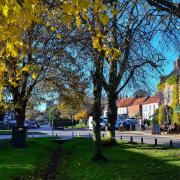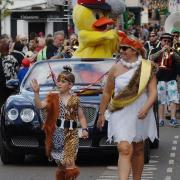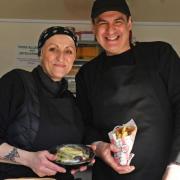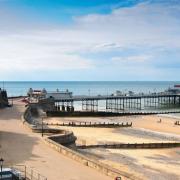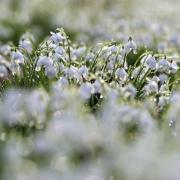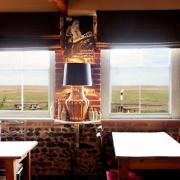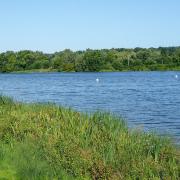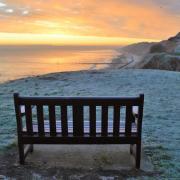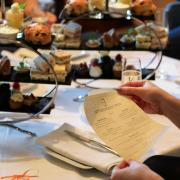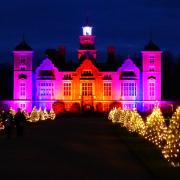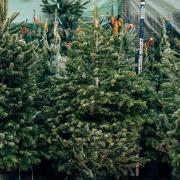Hickling Broad is the realm of the marsh harriers says Ben Garrod, NWT ambassador

What seems like a long, long time ago now, I was on a train going from Yarmouth to Norwich... you know the one I mean, it’s either so cold you’re sure you are developing the first signs of hypothermia by the time you hit Acle or the heating is up so high that it looks like a world record attempt for the biggest group striptease. Well anyway, I was on the train and we were passing through the Breydon estuary area... a beautiful spot, filled with numerous species of duck, as well as herons, egrets, reedlings and Little Brown Jobs (LBJs) that flit past the window too fast to identify.
The train trundled along and it stopped at the wonderfully remote Berney Arms station. As we slowly pulled away, I saw something that has always stayed with me... a beautiful big bird of prey striking a coot at full speed, just at the edge of some reeds in one of the wide dykes that surround the fields.
I had the most incredible view and the bird (the one doing the killing not the one being killed) didn’t seem bothered by the presence of the train at all. The other bird had more immediate problems, I’m guessing. As we passed the avian attack, the last I saw was the frantic flapping and scrabbling of the coot die away. A little awe-struck, I sat back into my seat and smiled, revelling in my first encounter with a Norfolk marsh harrier.
These beautiful big birds are part of the raptor family, sharing close ties with buzzards, kites and eagles. Since my first encounter, I have seen these beautiful and majestic birds regularly but only in Norfolk and mostly in one area. I have seen them twice more from the train and a few times over at Burgh Castle but mostly, I have seen them at Hickling, a place that seems to be their stronghold.

A place dominated by endless reed beds, bending and whispering in the breeze, framed under an impossibly expansive sky, Hickling Broad is a beautiful place and is a habitat of not only local and national importance but of international value.
Although home to cranes preoccupied with their awkward, raucous courtship display, swallowtail butterflies gliding past on sunlight-bright wings and resonating with the eerie booming call of the enigmatic bitterns, Hickling belongs to the raptors.
A visit any time of the year will give you a good chance at seeing marsh harriers here but if you visit across the winter months (and into early spring) then be prepared for a spectacle. Marsh harriers form what are known as communal roosts, coming together in their dozens throughout the long winters. We have no idea why they do it. They sit too far apart to benefit from the warmth of their neighbours.
One idea is that they somehow share a knowledge of hunting areas within the environment, passing on information to younger and less experienced birds. The truth is that we don’t know but it adds to their enigma.

What it does mean though is that these large brown birds of prey form bizarre and enthralling gatherings at Hickling. Not quite flocks in the true sense of the word but nevertheless, large numbers swirl in the sky above Hickling, swooping and gliding impossibly slowly. They are able to glide at just 20mph, allowing them plenty of time to spot prey beneath.
Marsh harriers are easy to spot, even for a useless birder like myself, so you don’t need to be an expert if you want to go and see some for yourself. They are the largest and heaviest of the harriers and are usually seen gliding on broad powerful wings, which they hold in a distinctive and shallow V shape.
It is only likely to be confused with the buzzard but the chocolate brown plumage of females and the grey wings and black wing tips of the smaller males easily distinguish them. Marsh harriers are a conservation success story. Back in the early 1970s only one or two pairs nested in Britain, in East Anglia. With better protection from persecution and better management of their wetland habitat, their numbers have increased.
Both the Norfolk Broads and the north Norfolk coast are their national strongholds but, more recently, they have spread into other parts of the country such as the Somerset Levels and the north west. They are considered by some to be as rare as nesting golden eagles within the British Isles, with around 400 breeding pairs.

I can tell you all day how wonderful Hickling Broad is but then again, I’m a little biased and you should always go with the real experts in any case. Typically, marsh harriers are migratory birds, arriving in the UK to breed in April with most leaving in September and October to winter in Africa.
They prefer habitats such as coastal marshes, grasslands, farmland near wetlands, fens and reedbeds and nest in large reedbeds where they feed on frogs, small mammals and birds, such as coots for example (well, at least one did). But Hickling offers them so much and the conditions are just right, meaning they are able to stay year-round at this enchanting yet hugely important site.
It’s now coming into spring, so make a note in your diary and head over to Hickling. You might be lucky enough to see their sky dance display, where a male calls his mate off the nest and passes food to her, locking talons in mid-air as they briefly and perilously fall towards the water. It is one of the most spectacular behaviours in British wildlife and just another reason why Hickling Broad is essential to the survival and health of countless species of your British wildlife.

Help NWT
Help Norfolk Wildlife Trust protect Hickling Broad – a national jewel at the heart of the Broads. Please donate today:
Call: 01603 625540
Or visit our website: www.norfolkwildlifetrust.org.uk/support-us/hickling-broad-land- purchase-appeal
Or our Just Giving page: www.justgiving.com/campaigns/charity/norfolkwildlifetrust/hickling or telephone: 01603 625540





